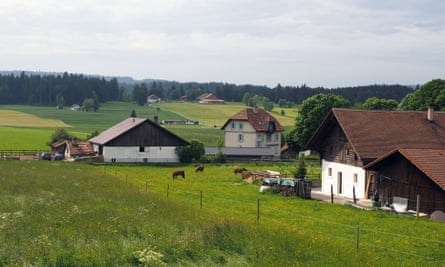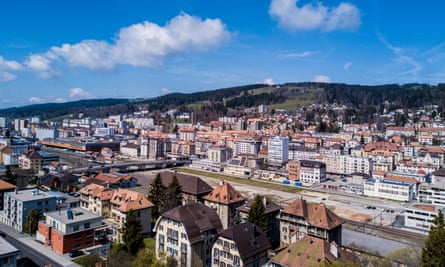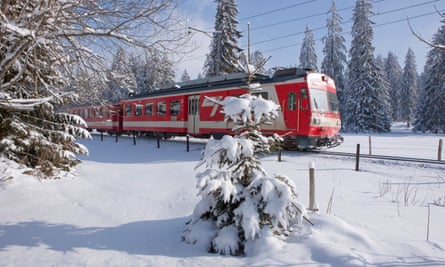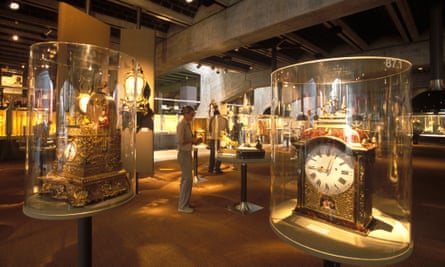
The man on the slow train through the Swiss Jura is keen to connect. When I mention that I have just travelled from Scotland, he leans forward and confides: “I can understand how they feel up there. We had to fight for our independence from Bern.”
The Jura region’s vote to secede from the canton of Bern in 1978 may not seem like a great upheaval in the broader sweep of European affairs, but issues of identity and autonomy run deep in the folded hills of the Swiss Jura. More than four decades on, the largely French-speaking République et Canton du Jura is still the newest in the Swiss Confederation. But that chance encounter on the train reminds me that there was a time when the question jurassienne provoked heated debates and even riots. There’s not a lot of talk of Jura libre in the hills these days, but there’s still a palpable sense of the this region being a place apart, a semi-detached portion of Switzerland with its own distinctive identity.
Free travel for visitors
“We have our own way of doing things,” says my fellow traveller. “We even have our own rail operator.” Les Chemins de fer du Jura is a company with strong local values that offers bus and rail services throughout the Jura. It’s an area blessed with excellent public transport, and slow trains and bus services are the perfect way to enjoy the rhythm of life here. Better still, it may not cost a cent. There are free travel schemes for visitors in many Swiss cantons, with particularly good arrangements in Ticino and Appenzell. In the Jura, the passport to free travel is the Jura-Pass guest card, given to visitors by accommodation owners; it offers free transport on the entire public-transport network within the Vagabond tariff association (Moutier and Tramelan, as well as Jura) and is valid from the time of arrival at your hotel until midnight on the day of departure (maximum 15 days).
I stayed in Glovelier, well up the Sorne valley from the cantonal capital of Delémont, my choice of base mediated by Glovelier’s nodal status in the transport network. This is a part of Switzerland made all the more accessible to rail travellers by the happy reopening in late 2018 of the long-defunct railway running south-east from the French city of Belfort into Switzerland. It’s now possible to travel from Paris to Glovelier in just three hours 33 minutes, with one easy change at Belfort-Montbéliard, where the train to Switzerland departs from the upper-level platform above the TGV station.
Know the terrain
Of the various rail excursions from Glovelier, the most interesting for newcomers to the region is the 32-mile (51km) line to La Chaux-de-Fonds, which is not in the canton of Jura at all but just over the border in neighbouring Neuchâtel. The Jura-Pass guest card is valid right through to La Chaux-de-Fonds.

The red CJ train from Glovelier to La Chaux-de-Fonds doesn’t rush. The ride takes 75 minutes, with more than a dozen stops along the way. The railway, like the principal roads in the region, works with the grain of the land. The Jura is a series of long escarpments that trend from north-east to south-west, and the narrow-gauge railway cuts a similar course. It was the line of least resistance for the engineers who built the route between 1892 and 1910.
But it has its topographic challenges as I discover in the first few minutes of the journey. We climb up into the forested Tabeillon valley, the hillsides tilting ever more sharply. Faced with steep slopes ahead, the train stops at a remote platform, where it reverses. The driver walks through the train, exchanging greetings with a number of passengers, apologising that we are already two minutes late, and then begins to drive from the other end. Soon we are on the move again, zigzagging up the hillside to gain the flatter land on the ridge high above.

Our starting point in Glovelier was just 500 metres above sea level. Soon we are cresting the 800-metre contour where we remain for the rest of the journey to La Chaux-de-Fonds. There are two longish stretches at more than 1,000 metres. The secret of travel success in the Jura is to gain elevation and stay high. The flattest land is not in the tortured, rock-strewn valleys but high up near the crest of the escarpments. Here the meadows and forests have a wonderful parkland quality in mid-summer. But that seemingly manicured appeal disappears when fierce winter storms sweep over the area. The landscape around the railway can be austere when hit with snow, but eventually the winds subside and the sun comes out to reveal some of Europe’s finest cross-country skiing terrain.

Jura radicalism
My interlocutor on the train displays typical Jura scepticism towards the Alps. “Why head for the big peaks where all the resorts are so crowded?” he asks, sensing I’m thinking these landscapes are seriously underrated.
But the appeal of the Jura is not just about scenery. The CJ rail routes, most particularly the main axis from Glovelier across to La Chaux-de-Fonds, really offer superb slow-travel experiences. It’s a chance to follow the warp and weft of the land and stop off at small communities along the way. Among my favourites are Pré-Petitjean and Le Bémont, both good for country walks.
The tame veneer of Jura villages and towns masks a fascinating social history. These places have always punched above their weight in politics. Lenin and Kropotkin were taken with the radical ideas that underpinned life here. It is a region renowned for its watchmaking tradition. Not, you might think, a natural springboard for revolution, but the communitarian and anti-state instincts of the region’s watchmakers were important in shaping European anarchism. With that in mind, it’s easier to understand why the Jura really is a place apart and how the question jurassienne could have sparked such discord.

These are thoughts to ponder as we drop down towards La Chaux-de-Fonds, where the obvious first port of call is the Musée international d’horlogerie, an outstanding museum that plots the history of watchmaking.
Travel notes
Trains run hourly from Glovelier to La Chaux-de-Fonds. They are free with the Jura-Pass guest card, or from CHF25 (£23) one way (return fares are double). There is no advantage in booking in advance – just pay on the day. Interrail passes are valid. The author stayed at the Hôtel-Restaurant de la Gare in Glovelier, where the accent is on good regional food and watching the trains come and go (doubles from £126 B&B).
The 17th edition of Nicky Gardner’s book Europe by Rail: The Definitive Guide is available from the Guardian Bookshop. She is co-editor of Hidden Europe magazine



